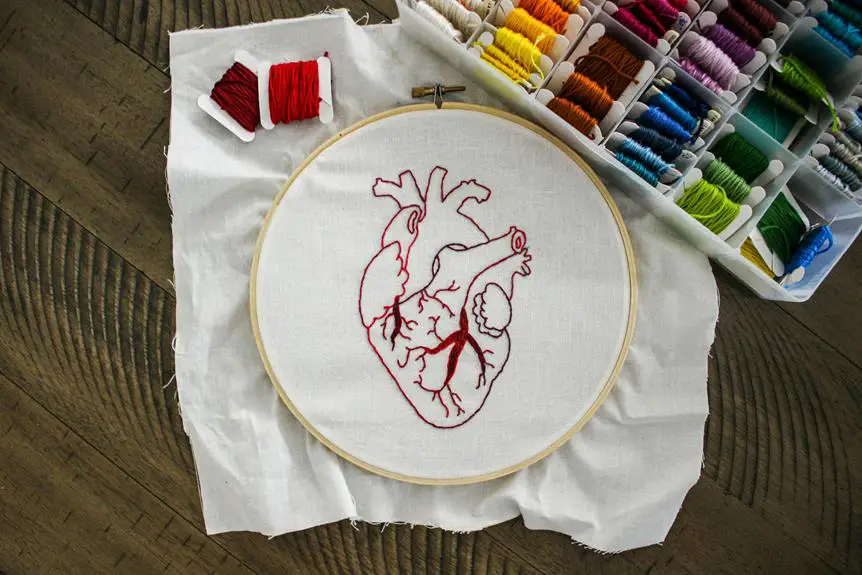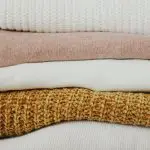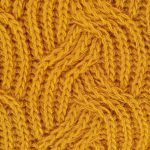When you consider the versatility of chenille, you might wonder about its potential when blended with other fibers. By combining chenille with materials like cotton or silk, you can achieve different textures and functionalities, enhancing everything from comfort to visual appeal. However, it's not as straightforward as it seems; the unique properties of each fiber can complicate the blending process. So, what are the specific benefits and challenges you should be aware of when exploring these combinations? The answer may surprise you.
Table of Contents
Characteristics of Chenille
Chenille is known for its distinctive softness and plush texture, making it a popular choice for various textile applications. You'll appreciate how this unique fabric feels against your skin, providing comfort that's hard to match. Its velvety surface is achieved through a special weaving process, where short lengths of yarn are tufted, creating that inviting pile you see.
One of the standout characteristics is its durability. Chenille holds up remarkably well over time, resisting wear and tear better than many other textile types. Although it's soft, it doesn't sacrifice strength, making it suitable for everything from apparel to upholstery.
Another notable aspect is its versatility in design. You'll find chenille in a spectrum of colors and patterns, making it easy to incorporate into any decor or fashion line. Its sheen adds an attractive element, enhancing visual interest and richness.
Lastly, since chenille drapes beautifully, you can create stunning silhouettes and designs that flow effortlessly. Whether you're using it for cozy blankets or stylish garments, understanding these characteristics helps you appreciate what chenille can offer.
Common Fiber Blends
Blending chenille with other fibers can enhance its qualities, resulting in textiles that offer even greater comfort, durability, and aesthetic appeal.
One common blend is chenille with cotton. This combination retains chenille's plush texture while adding breathability and absorbency, making it ideal for cozy blankets and soft clothing.
Another popular blend is chenille with polyester. This fusion increases durability and resistance to wrinkles and fading. It's perfect for upholstery and decorative items that need to withstand daily wear.
You might also find chenille blended with acrylic. This mix emphasizes vivid color retention and lightweight properties, ensuring that your fabrics remain vibrant while still feeling luxurious.
For a touch of elegance, chenille blended with silk can provide a unique sheen and softness, perfect for high-end garments and accessories that aim for a sophisticated look.
Benefits of Blending Chenille
Combining chenille with other fibers not only enhances its texture but also improves its overall functionality and appearance. When you blend chenille with a smooth fiber like polyester or cotton, you get the luxurious softness of chenille combined with durability and ease of care. This blend creates items that feel amazing against the skin while resisting wear and tear.
You'll also notice that blended fabrics can take on new characteristics. By mixing in fibers like rayon or wool, you can improve moisture absorption and regulate temperature, making your projects more comfortable year-round.
Plus, these blends can help maintain the plush look and feel of chenille, ensuring you don't lose that signature appeal.
Color retention is another advantage. Chenille can fade over time, but when blended with synthetic fibers, the color often stays vibrant longer, keeping your finished products looking fresh.
Additionally, blending can reduce pilling—an issue often associated with pure chenille—allowing your items to stay attractive for longer periods.
Challenges of Fiber Blending
While blending chenille offers many benefits, it also presents unique challenges that can complicate the fabric-making process. One significant challenge is the differences in fiber properties. Chenille's plush, velvety texture requires specific handling and tension adjustments during weaving or knitting, which mightn't align with other fibers' characteristics. If you don't fine-tune these aspects, you could end up with uneven fabric or inconsistencies in texture.
Another hurdle is ensuring compatibility for dyeing. Chenille blends need a careful balance in dye absorption to achieve uniform coloring. Some fibers might react differently to dye, leading to patchiness or unwanted color variations.
You also face potential issues with durability. Chenille can be less durable than other fibers when exposed to wear and tear. Mixing it with sturdy fibers may be tempting, but if you aren't careful, the resulting blend could still suffer from chenille's inherent fragility.
Lastly, managing shrinkage is crucial. Different fibers shrink at varying rates, so combining them can result in distortion of the final product. To ensure a successful blend, you must consider these challenges throughout the design and production process.
Examples of Chenille Blends
Chenille blends beautifully with various fibers, creating unique textures and enhancing fabric performance. By combining chenille with other materials, you can achieve stunning results that cater to different applications, from fashion to home décor. Here are some examples of popular chenille blends you might consider:
| Fiber Blend | Texture Characteristic | Common Applications |
|---|---|---|
| Chenille & Cotton | Soft and breathable | Apparel, beddings |
| Chenille & Polyester | Durable with a sheen | Throws, upholstery |
| Chenille & Acrylic | Lightweight and warm | Sweaters, children's wear |
| Chenille & Wool | Cozy, plush feel | Scarves, blankets |
| Chenille & Rayon | Smooth and lustrous | Fashion garments, accessories |
These combinations not only elevate the visual appeal but also enhance the functional properties of the fabric. For example, blending chenille with polyester adds durability, making it perfect for upholstery that withstands regular use. Likewise, mixing chenille with cotton results in comfortable clothing that's pleasant against the skin. Exploring these blends helps you create innovative fabrics that meet your specific needs.
Frequently Asked Questions
Can Chenille Be Blended With Natural Fibers Like Cotton or Wool?
Yes, you can blend chenille with natural fibers like cotton or wool. Doing this enhances both the texture and durability, making your fabric softer and adding unique visual appeal. It's a great choice for various projects.
Does Blending Affect the Softness of Chenille?
Blending can definitely affect chenille's softness. When mixed with other fibers, it may either enhance or diminish that plush feel you love. Always test blends to find the perfect softness for your projects.
How Does Weather Affect Blended Chenille Fabrics?
Weather can impact blended chenille fabrics significantly. You'll notice that high humidity may cause the fabric to cling, while cold temperatures can make it stiffer. Always store it properly to maintain its quality despite weather changes.
Are There Specific Dyes for Blended Chenille Materials?
When dyeing blended chenille fabrics, you'll want to choose dyes specifically formulated for synthetic fibers. These dyes ensure vibrant, lasting colors and help prevent fading, giving your blended chenille materials that stylish, eye-catching look you desire.
What Care Instructions Are Needed for Blended Chenille Items?
For blended chenille items, hand wash in cold water using mild detergent. Avoid bleach and fabric softeners. Lay flat to dry, since heat can damage the fibers. Always check care labels for specific instructions.
- How Does Ring Spun Cotton Affect Garment Fit and Shape Retention? - August 13, 2024
- What Are the Challenges in Producing Ring Spun Cotton? - August 13, 2024
- Is Ring Spun Cotton Suitable for Plus-Size Clothing? - August 13, 2024







